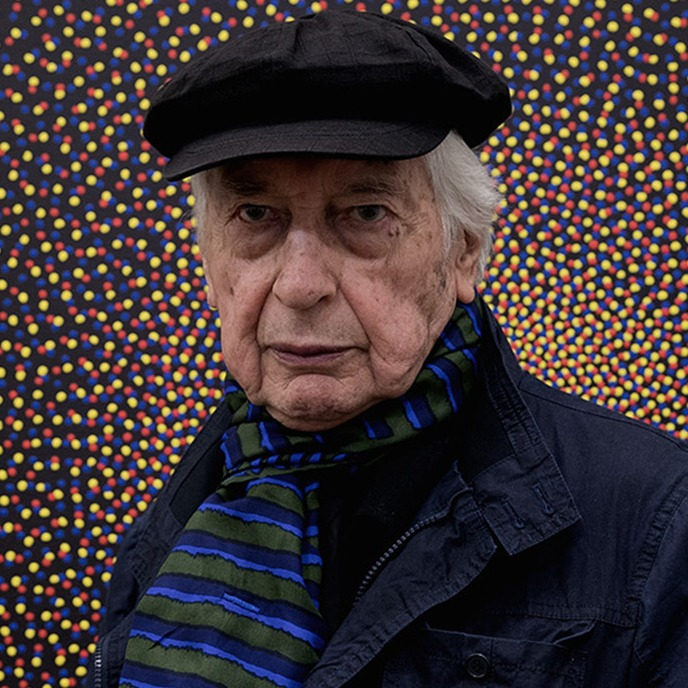
Julio Le Parc
Julio Le Parc is a distinguished figure in the realm of experimental visual arts, especially renowned for his contributions to modern Op-Art and Kinetic Art. His influence has resonated throughout the art world from the mid-20th century to the present day, leaving an enduring mark on the creative landscape.
Biography of Julio Le Parc
Julio Le Parc was born in 1928 in Mendoza, Argentina. He attended the School of Fine Arts in Argentina and developed an increasing fascination with the artistic avant-garde movement in the country. He also studied at the National University of the Arts in Argentina, where his initial interest revolved around exploring the connections between light and form.
In 1958, Julio Le Parc embarked on a transformative journey to Paris, having received a scholarship from the French Cultural Service. This pivotal move exposed him to the creative energies of the European art scene. In Paris, he encountered luminaries like Victor Vasarely and other significant representatives of Kinetic art. From these encounters, Le Parc not only drew inspiration for the formal aspects related to movement but also grasped the political dimensions of art. He aimed to create aesthetic experiences that demanded no prior knowledge or familiarity with the art world.
Julio Le Parc's dedication to art as a vehicle for social and political expression continued to evolve. He participated in the Atelier Populaire during the events of May 1968 in France, aligning himself with avant-garde radical publications. His artistic production, closely linked to Kinetic art, emphasized social and political engagement.
Julio Le Parc is a founding member of Groupe de Recherche d’Art Visuel (GRAV).
Julio Le Parc's Art Style
During the early part of his career, Le Parc primarily focused on painting, engraving, and creating monotypes. However, in 1959, he embarked on a new experiment involving light and its interaction with layers of Plexiglas, marking a significant shift in his artistic career. He showcased his work at the Bienal de São Paulo in Brazil in 1957, marking his first step onto the international art stage.
In the 1970s, Le Parc's artistic activities became less frequent, leading to a period when his work received less international attention. However, his passion for art remained undiminished. He returned to his exploration of light as a medium, sparking a renewed interest in his work among a wider audience.
In 2004, he collaborated with Yvonne Argenterio in Italy to create a series of sculptures known as "Torsions." His monumental sculpture "Verso la Luce" still stands in the garden of the Castle of Boldeniga in Brescia, Italy.
Years:
Born in 1928
Country:
Argentina, Mendoza
Gallery: